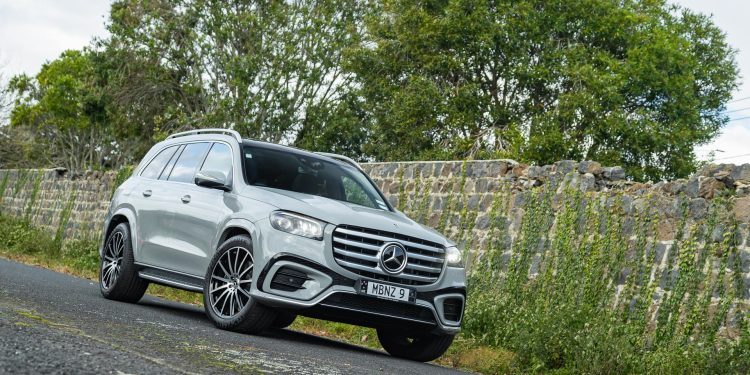2024 Mercedes-Benz GLS 450 d 4MATIC review
Words: Kyle Cassidy | Photos: Isaac Western
Mercedes-Benz has been busy updating its SUV range, the GLS the latest to gain some extras. Of those, the 48V injection is the most useful.
Big is good in the upper echelons of luxury. So the GLS, the biggest SUV in Mercedes-Benz’s line-up, must be the best, right?
Some might be happy with the (slightly) smaller GLE, whereas we reckon the GLC is just about perfect for most needs.
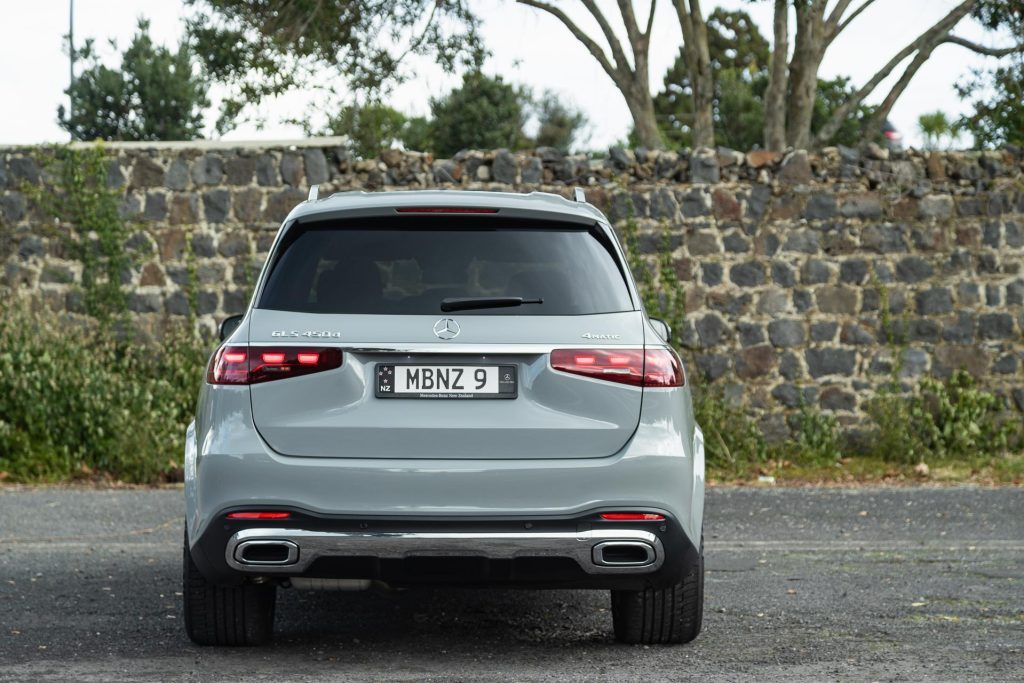
But purveyors of extravagance would not have that; it has to be the GLS or nothing. You can’t be turning up somewhere to be outdone by others.
The GLS should fit the brief as it’s domineering, luxurious and recently updated.
So what’s new?
The refinements entail the usual things; a spruce up outside, some extras inside and, as the times dictate, electrification added under the bonnet.
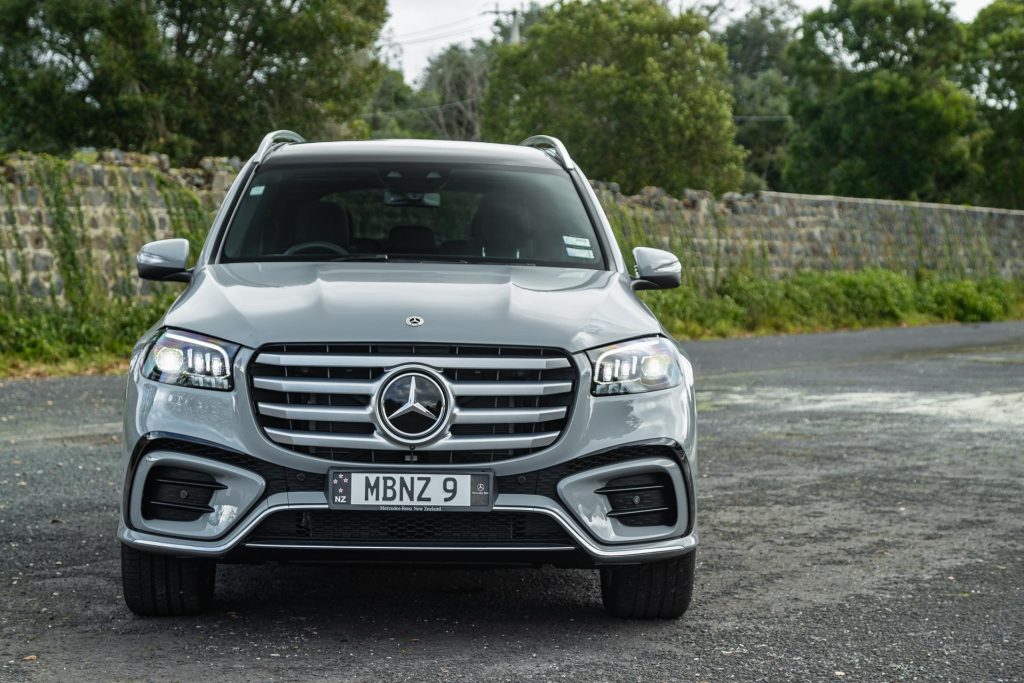
There’s a new grille, the four slats said to be reminiscent of the G-Class. The bumper has been reshaped, featuring new air inlets.
Not much to say about the rear, new lights making the grade, as do fresh alloy wheel designs and you can choose from some new paint finishes, like this grey hue here.
The 3.0-litre diesel has been modernised, adding a 48V mild hybrid system, and so the 400 d is now the 450 d on account of the power up.
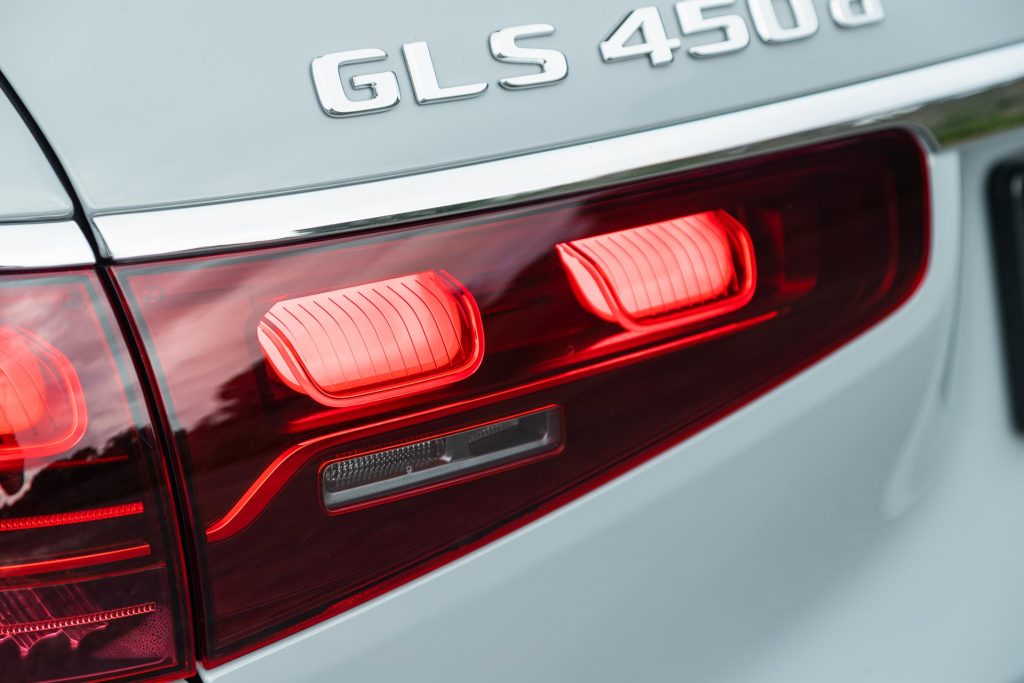
Those outputs are now out to 270kW and torque rises to 750Nm, this stirred up at just 1350rpm, and remaining through to 2800rpm.
It also gets a boost from the 15kW/200Nm ISG, which refines the idle/stop process. Consumption is listed at 9.0L/100km (rightcar.co.nz).
The extras will send you down the motorway on-ramp faster, the GLS now good for a 6.1sec run to 100km/h (or 6.3 in our hands). But it’s the way the diesel and electric bits combine at low speeds that impresses more.
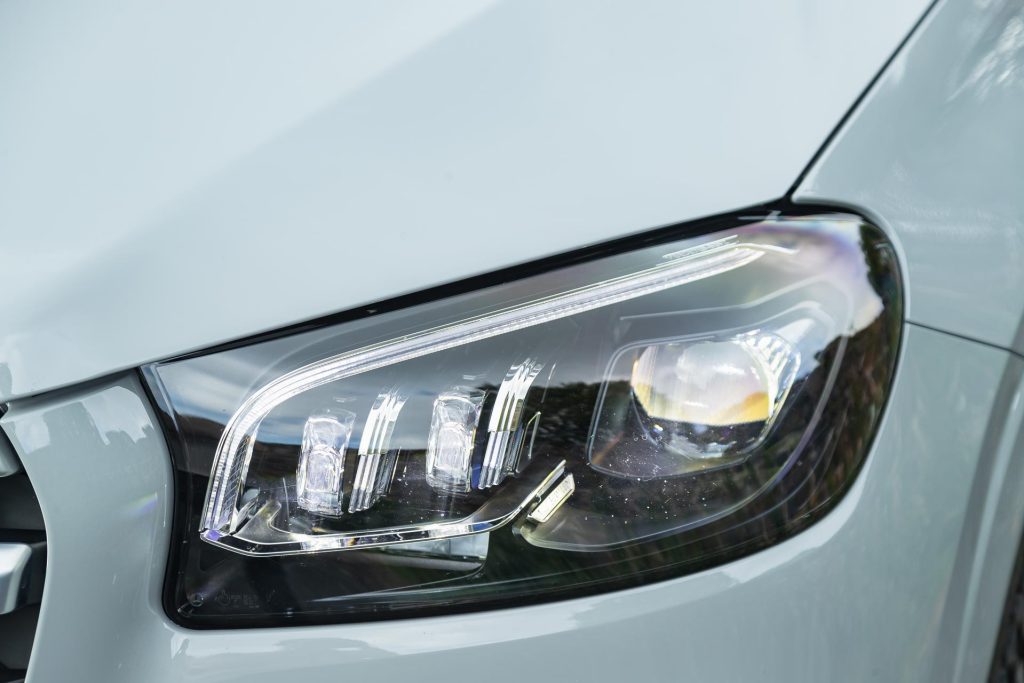
The GLS is a bus, all 2.6 tonnes of it, yet the 3.0-litre is not fussed by the mass.
The ISG turns the six pot on and off rapidly, while its 200Nm helps fill the gap from 0-1200rpm, and from there the diesel hums.
The 450 d powers on with the tacho rarely having to nudge past 2500rpm. The nine-speed auto sorts the shifting, moving smoothly through the ratios, yet is also quick to drop them when needed.
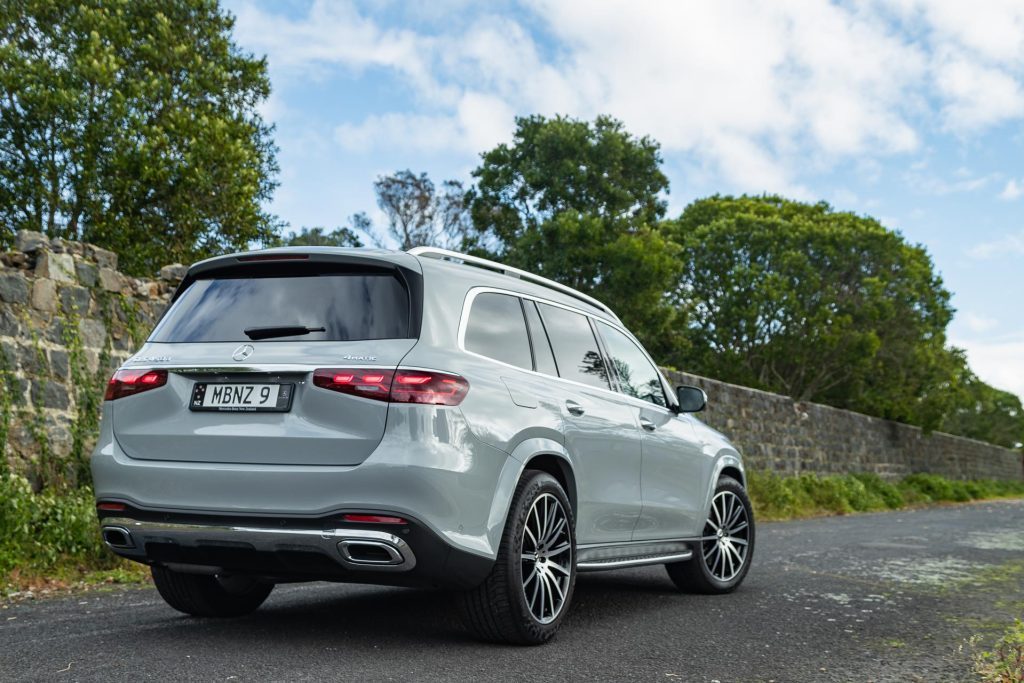
But the in-gear pull is such that it’s rarely required. It’s quiet too, though emits a powerful rumble as revs rise.
Making sure the spent diesel fumes don’t stink out those behind you, the GLS is Euro 6 compliant with a second-gen particulate filter apparently.
It’s not too hard to meet the stated fuel use figure either, this big rig having covered 4500km, while averaging 9.9L/100km (no doubt with a variety of driving styles).
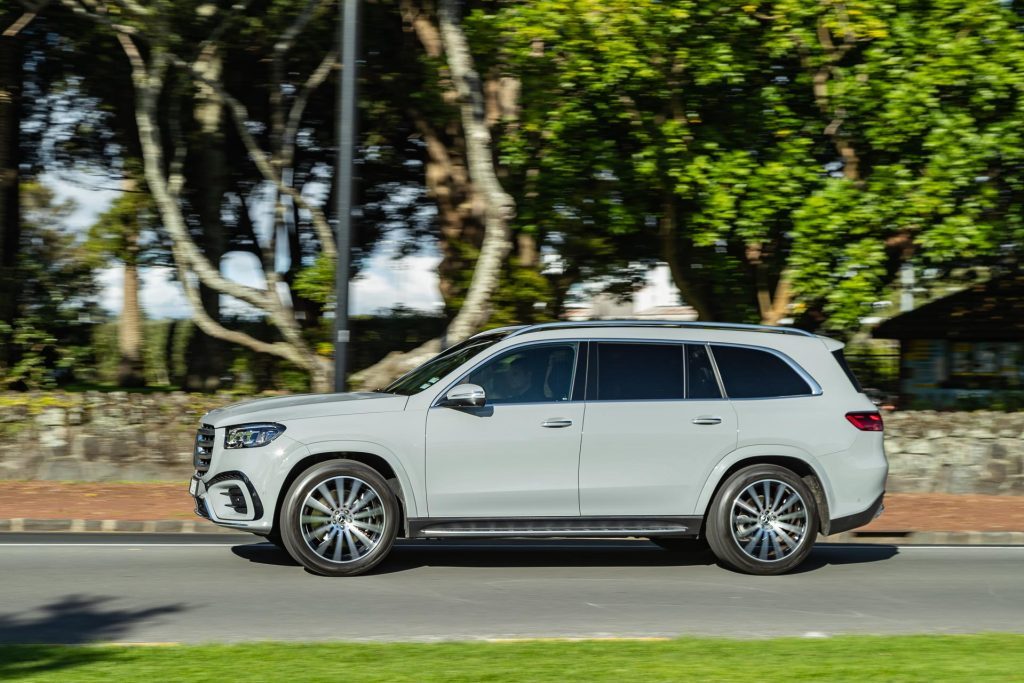
Not much changed inside?
No, not really. The wheel is new, and the cause of minor frustrations. It moves to the ‘Touch Control’ haptic buttons on the wheel spoke that do look nice but require a deft touch.
You can use them to bring up some of the new themes for the digital dash, though you’ll likely keep them to the classical layout, the others a tad gimmicky.
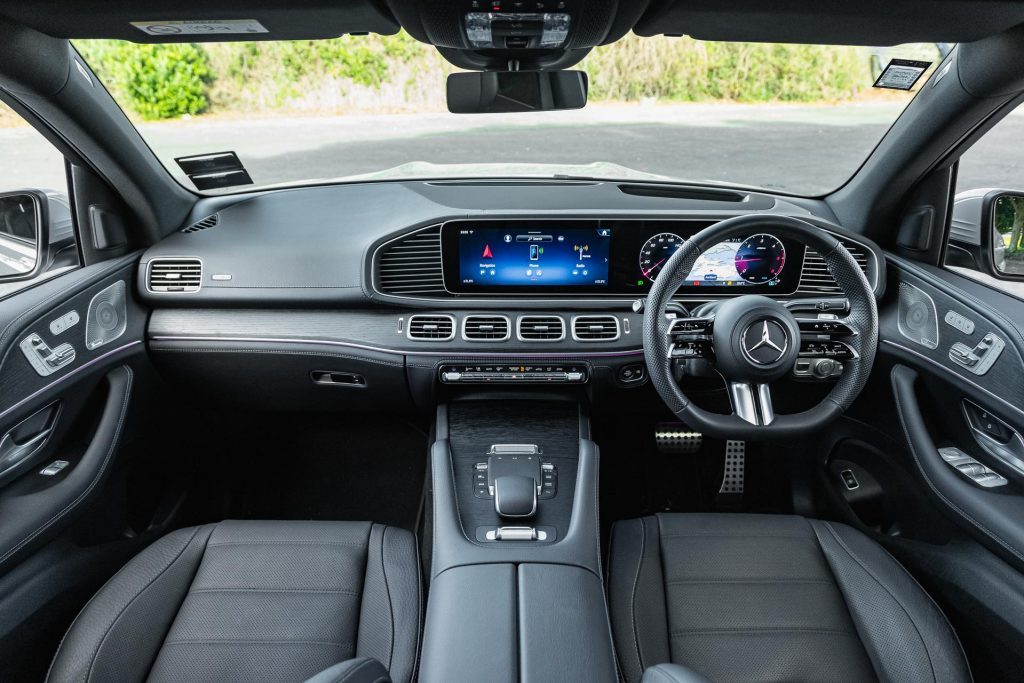
There was a time when we would have thought the GLS had a massive screen but now it seems understated, and better for it.
Merc’s hyperscreen is just OTT. It still does the job though, being easy to control using either the screen (sensitive to the touch, and quick to respond) or the trackpad, or the console buttons, or the voice control (which has been updated).
Apart from the fact it looks the same as the GLE’s interior, the cabin should impress your cronies, most surfaces lined appropriately, and with enough storage for what is a family-orientated vehicle.
In that regard it has many USB C ports about the place, even in the third row.
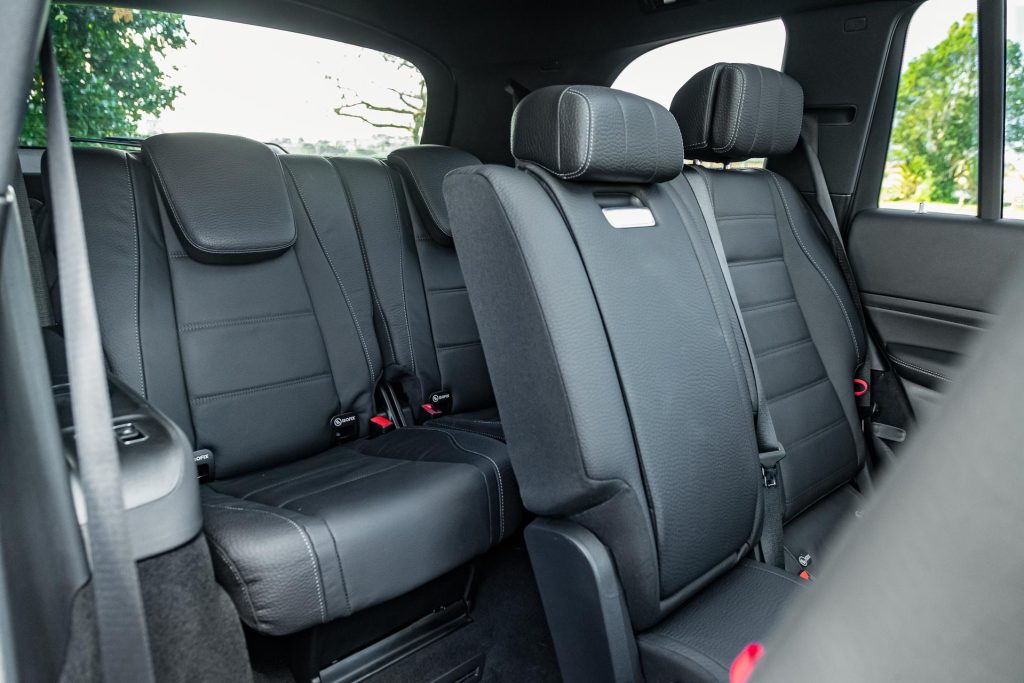
This literally has everything one could desire, right down to temperature-controlled cup holders. That’s why the lack of a heated wheel seems an oversight.
Merc’s well trained safety minders never annoy, the adaptive cruise works as it should, even the lane keeping behaves.
S-Class with seven seats
While an imposing machine, that size counts when carrying passengers. In the very back, there’s enough headroom for adults, and if those in the second row concede some space, there is okay room for lower limbs too.
While there isn’t much space in the middle spot, (the centre console extending back to rob leg room) the outer seats are rather swish, being adjustable and heated.
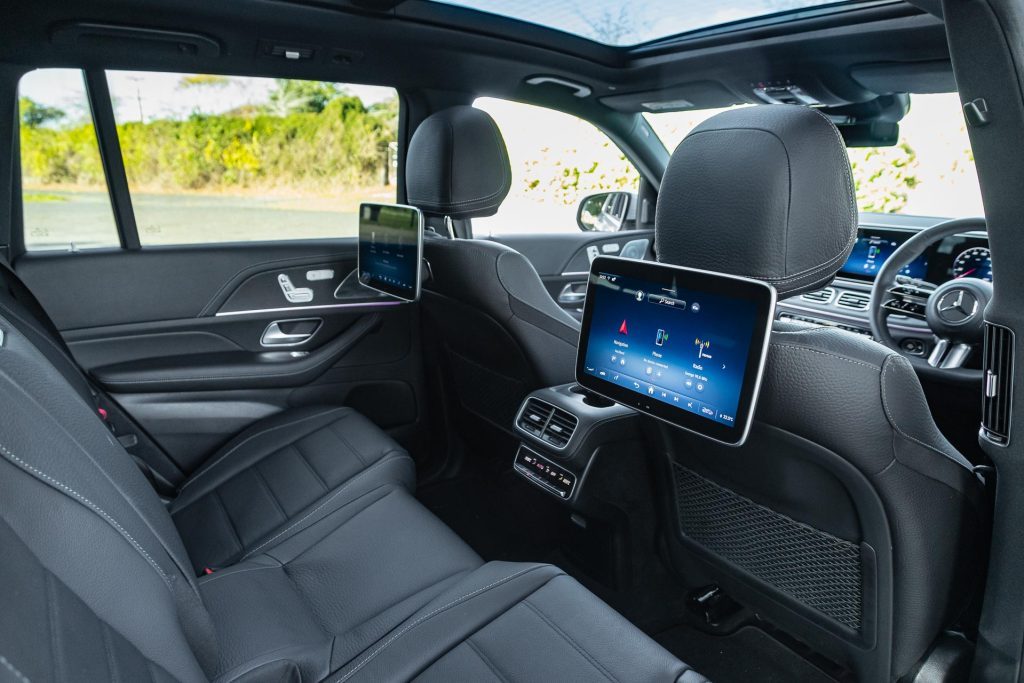
This GLS features one of the few options available for the model that is otherwise ‘fully loaded’. The rear comfort package ($9900) adds a pair of screens in the back and wireless headphones.
This gives rear passengers endless hours of distraction with access to the internet (some form of mobile data plan required).
But they can also fiddle with all aspects of the MBUX system, overriding the entertainment and helpfully adding your destination to the sat nav.
Surely there is a parental lock-out function we missed.
Fold down the arm rest and you’ll find yet another screen, this one a removable tablet to control the MBUX (which seems as pointless as it sounds) and a charge pad.
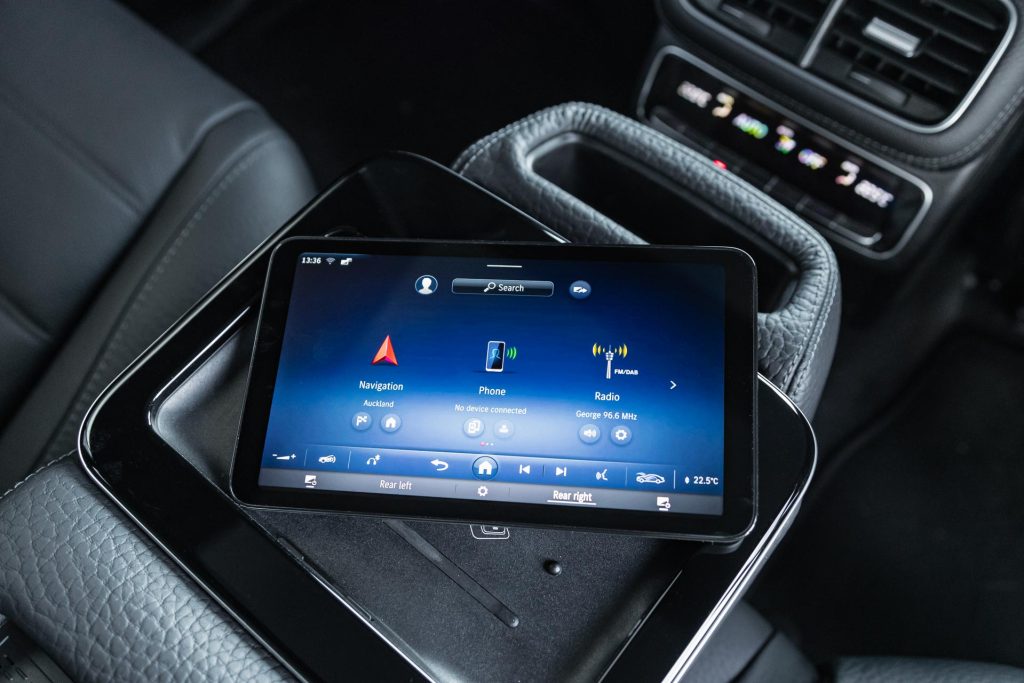
All the seats are power operated, the electrics taking care of the folding and sliding functions.
They can take their time but they all manoeuvre to allow trouble-free folding, and you can drop all of the seats with the press of a button to liberate a large 2400L cargo area.
With all seats in use, there is still enough space in the boot for the family pooch to fit comfortably.
And when your canine companion gets a bit old, you can lower the GLS down on its air springs, giving them a leg up.
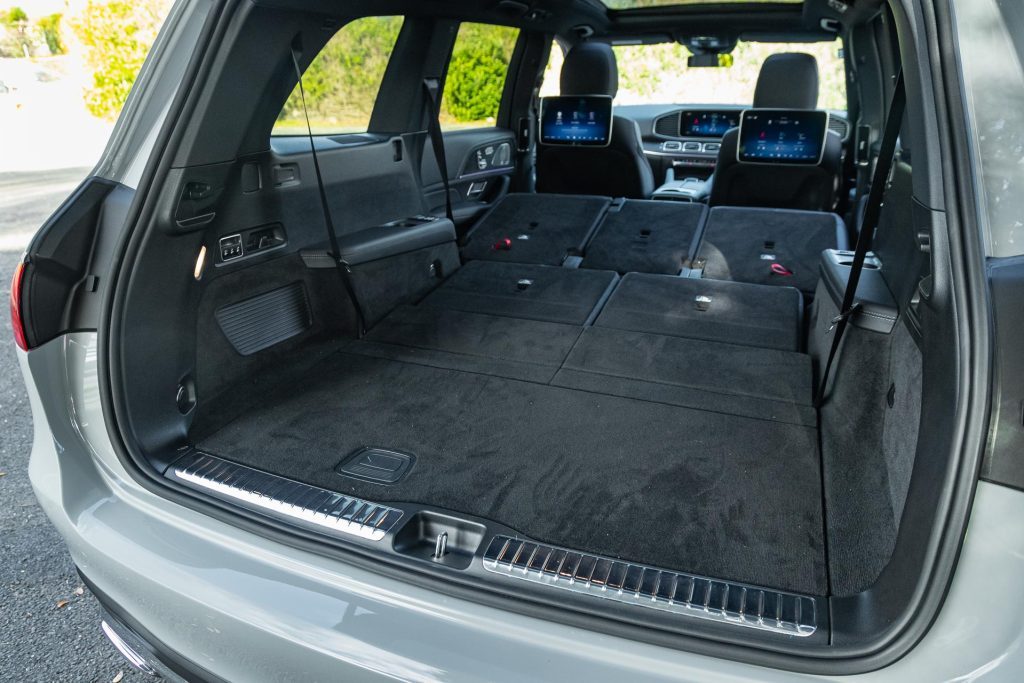
Goes boldly
The GLS rides on adaptive air suspension, so the ride is luxurious most of the time. However, with 23-inch wheels some of the bumps still get through.
The turn-arounds are big but the steering is quick and light, and there are many sensors and cameras and parking assistants to help.
If the roll feels a little too much at speed, selecting Sport helps, the adaptive dampers firming to lend more control. The masses of rubber lend this ample traction and grip, yet the ride remains quiet.
Prices up too
What used to be $167k when we first drove it a few years back is now $191,300 (although there is an increase in standard equipment), and yet you can spend even more on a GLS.
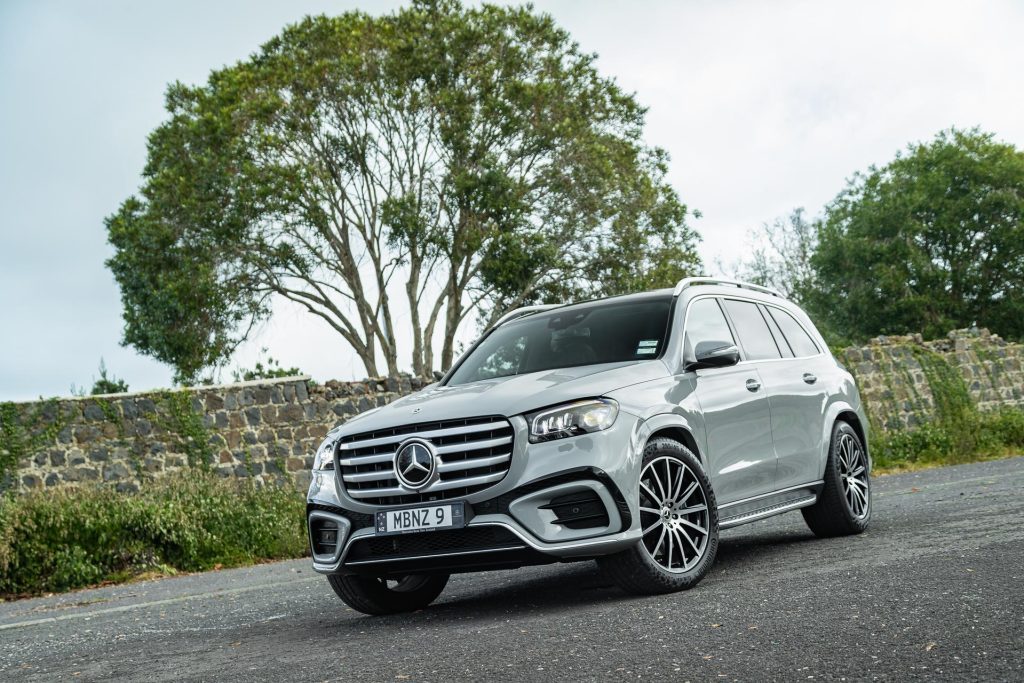
There’s the AMG 63 version at $297,5001 or the Maybach 600, all $370,100 of it.
And with that in mind, the 450 d doesn’t seem so expensive after all.
| Model | Mercedes-Benz GLS 450 d 4MATIC |
| Price | $191,300 |
| Engine | 2925cc, IL6, TDI |
| Power | 270kW @ 4000rpm |
| Torque | 750Nm @ 1350-2800rpm |
| Motor Output | 15kW / 200Nm |
| Drivetrain | 9-speed auto, AWD |
| Turning circle | 12.5m (2.5 turns) |
| Fuel Use | 9.0L/100km |
| C02 Output | 240g/km |
| 0-100km/h | 6.32 sec |
| Tyre Size | f-285/40R23 r-325/35R23 |
| Fuel Capacity | 90L |
| Stability systems | ABS, ESP, TV |
| Safety | AEB, ACC, BSM, LDW, RCTA, ALK, AHB |
| Luggage Capacity | 355 / 810 / 2400L |
| Tow rating | 750kg (3500kg braked) |
| Service intervals | 12 months/30,000km |
| Warranty | 3 years / unlimited km |
| ANCAP rating | Not yet rated |
| Weight | 2595kg (claimed) |
This story first appeared in the July 2024 issue of NZ Autocar magazine.


